Oh, what a trip! Everything everyone told us to expect and more...the boat, the crew, the reefs, the fish...all of it fantastic! I can't wait to come back and go to Tonga and swim with the whales. I learned a LOT about fish and marine life from Josh... a great bonus! And, in between all the fantastic dives, the galley kept us fed in style! Thanks all for a trip we will remember (and be talking about!) for a long, long time.
Bonnie & Doug Toth, Atomic Aquatics, San Clemente CA
Thanks to Josh, Liz, Suli and 'the boys' for the very best trip ever on the very best dive liveaboard, bar none.
Bonne Cardone, Santa Maria CA
Welcome aboard Grant and Sonia!
Josh and Liz have run NAI'A for nearly three years while Cat and I popped out daughters (we'll stop at two, thank you very much). I reckon they must feel guilty about having so much fun while being paid because they've decided to retire at the end of September to pursue their careers as underwater filmmakers. Having seen their work, I'm convinced that NAI'A's loss will be the video world's gain! But who to replace them with?
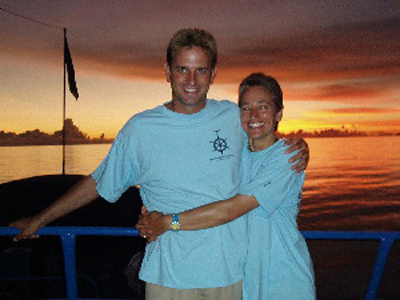 |
|
Grant Searancke and Sonia Goggel. |
Grant Searancke and Sonia Goggel are famous in the Red Sea and are well-known throughout the rest of the diving industry. They bring with them decades of experience, technical excellence, and amazing enthusiasm. The boat we plucked them from, the MY Hurricane, won liveaboard of the year 2004 in the UK Diver Awards and they have a very loyal following in the UK. Most recently they ran the Spirit of the Solomons and I know the Bilikiki team is sad to lose them to Fiji.
Rebreathers on NAI'A
When Cat and I worked as support crew for Howard Hall's IMAX film Coral Reef Adventure, we fell in love with rebreather diving. Howard and his team were able to get inches away from their subjects and stay until they got the shot three, four, five hours if necessary. But rebreathers are expensive and require a full-time equipment nerd to keep them running.
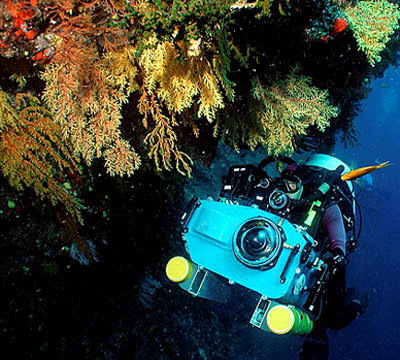 |
|
Howard Hall using rebreather and IMAX camera in Fiji. |
NAI'A's nerd is here! Besides his many other accomplishments, our new cruise director, Grant, is a certified rebreather instructor with the equipment, the training, and the inclination to introduce others to the magic of quiet diving. From September this year, NAI'A will offer rebreather introduction and training on both open and closed-circuit units, as well as support for keen tech divers who already have their own units.
The advantages of rebreathers fall into two major categories: reduced noise and decompression efficiency. Because rebreathers recirculate a diver's breathing gas, they release few bubbles into the water. In contrast to traditional scuba systems, which emit noisy streams of bubbles with each breath, rebreathers offer the advantage of quiet operation.
The other major advantage of rebreathers - decompression efficiency - stems from these devices' ability to deliver the optimum gas mixture for a given depth. A semi-closed system (e.g. Drager Dolphin), will provide nitrox or mixed-gases that can be custom-blended for the intended depth of the dive. Fully-closed rebreather systems (e.g. Evolution) are often computer controlled and can actually change the gas mixture based on depth and the nature of the dive.
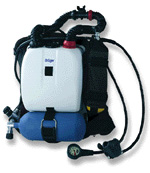 |
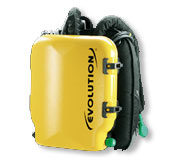 |
|
Dolphin Drager. |
Evolution. |
These characteristics allow rebreather divers to dramatically extend their bottom time or to shorten decompression obligations when engaged in extended range diving. For example, a fully-closed rebreather diver can perform a dive profile of 67ft/20m for 3 hours with NO DECOMPRSSION requirements!
Digital Photography Workshops
We are excited to announce two digital workshops with megapixel master Rod Klein in 2007: February 3-10 (7 days) and February 10-20 (10 days).
Unless you live under a rock, you know that digital is in. Film is dead. I have a much-cherished old Nik V with a battered 15mm lens, and it cost me too much and takes pictures too perfect to throw away just yet, but when I heard that Nikon stopped making film cameras, I knew the jig was up. Better go digital.
But there's digital and there's digital. The cheap little point-and-shoots are pretty impressive and I have eight thousand, six hundred and seventy three glorious pictures of my little girls to prove it, but the little cameras don't support the lenses and strobe configurations you need to get the photos that old farts like me think had to be shot on film. Despite the digital revolution, there is still a lot of art and knowledge involved in shooting awesome underwater photos.
Why not combine another great dive trip with a chance to learn proper digital photography from one of the masters of this new medium?
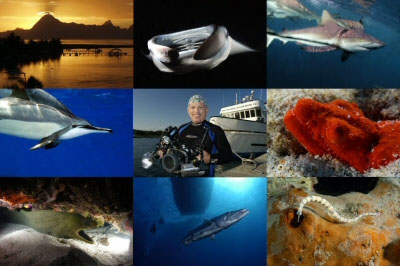 |
|
Rod Klein. |
We knew Rod before he was famous back when he was merely an outstanding videographer, video editor and dive instructor. But as digital cameras and housings have matured, Rod has evolved with them into a well-respected digital photographer, teacher, and commentator. Formerly the digital editor for Fathoms Magazine, Rod is currently the contributing editor for Scuba Diving Australasia and a regular presenter at dive and photo festivals.
Five Reasons to go digital:
1) Instant Feedback. See what you shoot right away. Adjust your composition and exposure and keep at it until you get the perfect picture.
2) Instant Gratification. No more waiting for the boat crew to process your film or for Kodak to send back those little yellow boxes.
3) No film. Never miss a great shot because you ran out of film on your dive. View and delete inferior images underwater so you have an almost unlimited number of shots.
4) No film processing. Share your pictures with your friends and family. See your images on your camera or laptop right after your dive. Never spend a cent on film processing.
5) Change lenses underwater: Many of the digital camera housings allow you to change lenses underwater so you never have to decide what lens to take with you.
These special workshops will be held on back-to-back charters so you can join us for either one or both. Each workshop will be geared to participants' individual needs. There will be sessions for beginning, intermediate and advanced shooters. Whether you are using a fixed lens digital camera or a digital SLR the workshop will attend to your special needs. Want to know more about Photoshop CS2? We'll teach you some great tips and tricks. Scared of using RAW files...no problem, we'll get you shooting and processing raw the first day. Good at macro but having problems with wide angle....we'll fix that!
Other subjects Rod will cover include: color management, monitor calibration, special Photoshop techniques using adjustment layers & layer masks, image upsizing for large prints, and special sharpening techniques using Photo Kit Sharpener.
These two charters are not exclusive to the workshops; they are open to anyone even if you don't participate in the workshops (which cost an additional $250).
Leave the Load at Home
Most people love their well-worn fins, mask, BC and regulator but what if you could rent the best gear made for a reasonable cost and avoid the hassle of carrying your own? The airlines aren't doing divers any favors these days and the cost and effort to drag heavy dive gear through multiple airports and security checkpoints can be a real drag. We are fortunate that Fiji is just one flight away from the main Pacific Rim countries, but we always look for ways to improve our service.
We can supply the newest Atomic, Aqualung and ScubaPro gear. If there is enough interest, we'll buy the gear and rent it to you.
Please help us determine the type of rental gear to purchase by filling out our online questionnaire.
Click Here for the Rental Survey. Vinaka!
Tavi
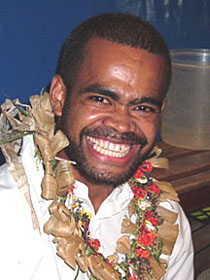
Tavite Talau. |
Tragically, our Chief Engineer, Tavite Talau, died of cancer on March 1st after a very short illness. He was barely 26. Tavi started with us as cadet engineer when he was 18 and, after completing his studies at the Fiji Maritime Institute, he worked his way up to chief. Hundreds of you will remember Tavi for his firm grip and huge welcoming grin as he helped you aboard the ship after a dive. We'll miss him.
Barrel Family
Okay, I won't actually show you all 8,673 pictures of our girls, only these two. Malia just turned two and Parri is six months old. We've discovered that looking after two-under-two is nearly as much work as looking after 18 divers on the boat! And just as much fun .
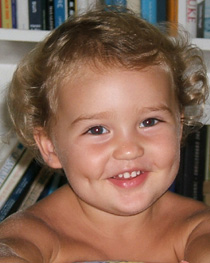
Malia. |
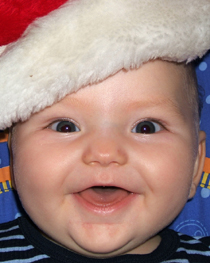
Parri. |
Vinaka Discount
Don't forget that NAI'A passengers are entitled to $200 off your first return trip, plus an extra $100 off each additional NAI'A trip. YES, it's retroactive!
Send-a-friend: for each new NAI'A diver you refer directly to us, claim $200 off your next NAI'A trip. Join your friends for their NAI'A expedition and claim your bonus immediately.
-- By Rob Barrel for the NAI'A family
